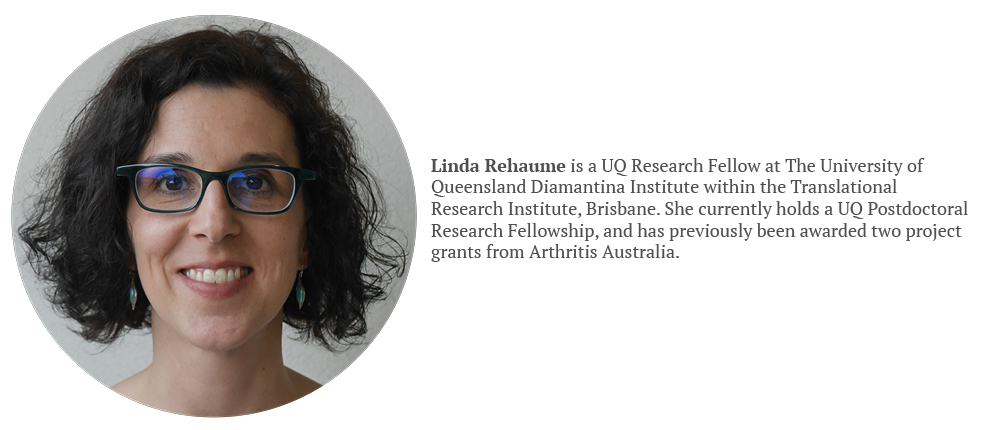
Can you describe the aim of your research in 10 words?
I am studying the triggers and mechanisms underlying spondyloarthritis and ileitis.
What do you know/have discovered about this topic so far?
We have shown that the microbiota is affected by immunogenetic background and is important for the development of disease. We also showed that the composition of the microbiota affects disease severity.
Surprisingly we found that genetically susceptible mice could be protected from gut inflammation by living in the same cage as wild type non-susceptible mice, possibly from transfer of a protective microbe(s).
We have also recently shown that a clinically relevant treatment not only suppresses SpA development but shifts the fecal microbiota composition and prevents the usual outgrowth of bacteria associated with arthritis and inflammatory bowel disease in response to an inflammatory trigger.
What aspect of this research excites you the most?
I’m excited about the potential to alter the microbiota to eliminate disease or reduce its severity.
Our research suggests that the microbiota is amenable to change and that these changes may affect disease onset or outcome. We are now investigating how and which bacteria contribute to or protect-against disease.
What’s your Holy Grail – the one thing you’d like to achieve in your research?
I would like to identify unequivocal causal factors of SpA. It is clear that your health is influenced by a complex interplay between your genes, your immune system, your diet, your environment, and a staggering diversity of microbes.
We know that microbes found in our gut and on our skin have a profound effect on the development of our immune systems, and influence our susceptibility to immune-related diseases.
However, studies to-date have not established causation or a mechanism by which microbiota contribute to disease. With the establishment of a gnotobiotic facility within the TRI, which is only the second in Australia, we will be able to establish causal factors of SpA, which has to-date not been feasible.
What has been/will be your biggest hurdle?
I think a major challenge is progressing basic science from the laboratory to the clinic in terms of understanding the mechanisms associated with the diseases before progressing to novel treatments.
How long before your work impacts patient care?
We aim to translate our research within the next 5 years. We have been utilising sophisticated techniques to analyse the composition of the microbiota in a mouse model of SpA, and will compare our findings with the microbiota of patient samples. We have also been profiling the microbiota of mice after treatment with a clinically-relevant biologic, which will inform future clinical trials.
Who has inspired you and why?
I have been very fortunate to have some incredible mentors during my research career. I obtained my PhD from the University of British Columbia, Canada under the mentorship Professor Robert E.W. Hancock, and I’m a proud S.O.B. (Survivor of Bob)!
During my PhD, I also worked in the laboratory of Professor Gordon Dougan at the Wellcome Trust Sanger Institute, Cambridge, UK. They both allowed me the freedom to work independently, but knew when I needed more guidance.
My current supervisor, Professor Ranjeny Thomas, has given me a myriad of opportunities and support, which have allowed me to advance my career.
On a personal note I embarked on a PhD in immunology and have an interest in autoimmune disease because my Dad suffered from polymyositis.
If you could only keep three possessions, what would they be?
Camera, glasses, phone.